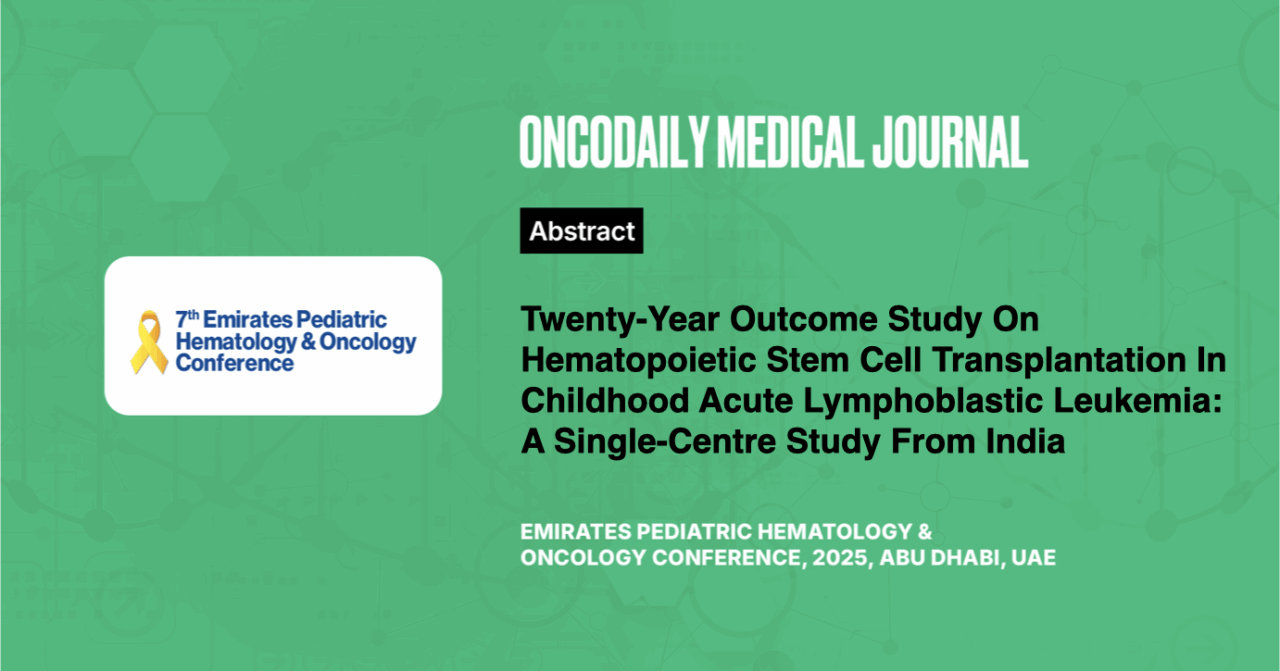Twenty-Year Outcome Study On Hematopoietic Stem Cell Transplantation In Childhood Acute Lymphoblastic Leukemia: A Single-Centre Study From India
Abstract
Introduction: Hematopoietic stem cell transplantation (HSCT) is a known curative option for high risk and relapsed/refractory acute lymphoblastic leukemia (ALL). We present twenty-year outcome data on children post-HSCT for ALL and variables affecting relapse-free survival. Objective was tonstudy outcome of hematopoietic stem cell transplant in childhood acute lymphoblastic leukemia.
Methodology: A retrospective cross-sectional study of children ≤18 years who underwent HSCT for ALL from 2002-2022 was performed. Exclusion criteria: patients >18 years, mixed lineage leukemia. HLA typing of family members and unrelated donor search done for best available donor. EC approval taken and data collected from electronic medical records.
Results: A total of 141 children were included, with male:female ratio of 2.4:1. Engraftment was achieved in 140 children(99.2%), with primary graft failure in one child(haplo-HSCT). Incidence of acute GVHD was documented in 100(71%),chronic GVHD was documented in 81(57%) children. Overall survival in the cohort 85/141(60%) with follow up range of 2-20 years. Relapses occurred in 44 (31%), with relapse-free survival of 68%.Non-relapse mortality seen in 20 (14%), with GVHD in 10, infections in 5, others in 5. Among those who died from GVHD, 70% had MUD HSCT, while 4/5 children who succumbed to infections had undergone haplo-HSCT. Relapse rates varied by donor type ( 41%- MUD, 27%-haplo-HSCT, 28%-MFD) .Relapse rates were 31% with PBSC, 28% with cord and 20% with bone marrow. Relapse rates were 29% in B-ALL, and 40% in T-ALL; while relapse in CR1, CR2 and CR3 were 22%, 33% and 100% respectively.GVHD did not impact relapse-free survival. Among those with MRD positive disease pre-HSCT, two are alive and two relapsed. In our study overall survival was 59% with total body irradiation. Comparable results were observed by Andre Manfred Willasch et al, overall survival was 58.5% with total body irradiation and 36% with chemotherapy based conditioning. Hematopoietic stem cell transplant in CR 2 has better outcomes than HSCT in CR3. Also total body irradiation conditioning shows good survival as compared to only chemotherapy based conditioning(1). In a study by Matthew J. Wieduwilt et al chronic GVHD was higher in Matched sibling donor HSCT, MUD HSCT showed increased non relapse mortality, increased aGVHD ( P=0.005). Umbulical cord blood had worse overall survival, more aGVHD( P=0.001) and haploidentical HSCT had less GVHD, no difference in survival(2). In our study chronic GVHD was higher in Haploidentical HSCT. Acute GVHD- Haploidentical HSCT was more than MUD, whereas it was lowest in matched family donor. Overall survical was highest in MFD compared to haploidentical HSCT and lowest in MUD (p value < 0.001).
Conclusion: The study reports twenty-year data on HSCT in childhood ALL with 99.5% engraftment with TBI-based conditioning. The overall survival is 60%, with relapse-free survival of 69%. Relapses were higher among MUD HSCTs, T-ALL and in CR3, with higher mortality due to GVHD among MUD and infections among haplo-HSCTs.





